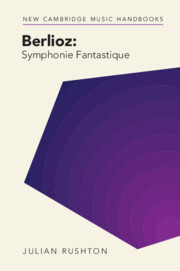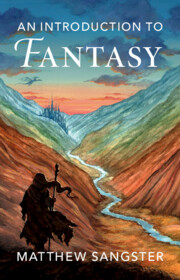70 results
Chapter 21 - William Morris’s ‘Medieval Modern’ Afterlives
- from Part V - Influences and Legacies
-
-
- Book:
- The Cambridge Companion to William Morris
- Published online:
- 03 May 2024
- Print publication:
- 23 May 2024, pp 283-297
-
- Chapter
- Export citation
Chapter 11 - Morris’s Prose Romances and the Origins of Fantasy
- from Part II - Authorship
-
-
- Book:
- The Cambridge Companion to William Morris
- Published online:
- 03 May 2024
- Print publication:
- 23 May 2024, pp 147-158
-
- Chapter
- Export citation
2 - Colonialism and Modern Sexuality
-
-
- Book:
- The Cambridge World History of Sexualities
- Published online:
- 26 April 2024
- Print publication:
- 16 May 2024, pp 27-49
-
- Chapter
- Export citation
Chapter 19 - Fables and Fantasy
- from Part IV - Genres
-
-
- Book:
- Jonathan Swift in Context
- Published online:
- 02 May 2024
- Print publication:
- 09 May 2024, pp 148-155
-
- Chapter
- Export citation
4 - Imagining Home
- from Part II - Social Groups
-
- Book:
- Making Sense of the Great War
- Published online:
- 11 April 2024
- Print publication:
- 18 April 2024, pp 160-194
-
- Chapter
- Export citation
Chapter 5 - Impossible Monsters, Rabbit Holes, and New Worlds
-
-
- Book:
- Nineteenth-Century Literature in Transition: The 1860s
- Published online:
- 01 February 2024
- Print publication:
- 08 February 2024, pp 94-110
-
- Chapter
- Export citation

Berlioz: Symphonie Fantastique
-
- Published online:
- 30 November 2023
- Print publication:
- 30 November 2023
Chapter 6 - The Artist Is Not Present
-
-
- Book:
- Kierkegaard's <i>Either/Or</i>
- Published online:
- 16 November 2023
- Print publication:
- 30 November 2023, pp 98-115
-
- Chapter
- Export citation
Chapter 3 - Sexuality
-
- Book:
- Freud's Thinking
- Published online:
- 21 September 2023
- Print publication:
- 05 October 2023, pp 52-89
-
- Chapter
- Export citation
8 - Science Fiction and Fantasy
- from Part I - History and Genre
-
-
- Book:
- The Cambridge Companion to the American Graphic Novel
- Published online:
- 10 January 2024
- Print publication:
- 28 September 2023, pp 139-154
-
- Chapter
- Export citation
6 - Fantastic Communities and Common Ground
-
- Book:
- An Introduction to Fantasy
- Published online:
- 07 October 2023
- Print publication:
- 07 September 2023, pp 374-431
-
- Chapter
- Export citation

An Introduction to Fantasy
-
- Published online:
- 07 October 2023
- Print publication:
- 07 September 2023
Introduction
-
- Book:
- An Introduction to Fantasy
- Published online:
- 07 October 2023
- Print publication:
- 07 September 2023, pp 1-52
-
- Chapter
- Export citation
2 - The Value of Iteration
-
- Book:
- An Introduction to Fantasy
- Published online:
- 07 October 2023
- Print publication:
- 07 September 2023, pp 97-161
-
- Chapter
- Export citation
Envoi
-
- Book:
- An Introduction to Fantasy
- Published online:
- 07 October 2023
- Print publication:
- 07 September 2023, pp 432-436
-
- Chapter
- Export citation
Chapter 8 - The Psychology of Gambling
-
- Book:
- Luck, Leisure, and the Casino in Nineteenth-Century Europe
- Published online:
- 24 August 2023
- Print publication:
- 07 September 2023, pp 168-180
-
- Chapter
- Export citation
3 - Root Formations
-
- Book:
- An Introduction to Fantasy
- Published online:
- 07 October 2023
- Print publication:
- 07 September 2023, pp 162-224
-
- Chapter
- Export citation
5 - Fashioning Worlds
-
- Book:
- An Introduction to Fantasy
- Published online:
- 07 October 2023
- Print publication:
- 07 September 2023, pp 298-373
-
- Chapter
- Export citation
1 - Fantasy, Language and the Shaping of Culture
-
- Book:
- An Introduction to Fantasy
- Published online:
- 07 October 2023
- Print publication:
- 07 September 2023, pp 53-96
-
- Chapter
- Export citation
4 - Enlightenment and its Shadows
-
- Book:
- An Introduction to Fantasy
- Published online:
- 07 October 2023
- Print publication:
- 07 September 2023, pp 225-297
-
- Chapter
- Export citation



